A U.S. combat officer tells the tales of four WW2 fighting men as they related to the Normandy Invasion.
It’s a hell of a thing to participate in combat. Imagine looking through a telescope and seeing your very soul, naked and bare before the world. This is what combat shows oneself. The key is to forget yourself, and to completely forget who you were, or who you ever wanted to be, and just to exist solely in the moment; a meditative process easier said than done.
Imagine though, having to face combat to a scale that overwhelms your senses beyond training or expectation. To be physically contained in a rocky boat, shoulder to shoulder with your comrades, slowly propelling toward an inferno of explosions and machine gun fire, all concentrated on a patch of sand where the longer you remained, the greater chance of your death or dismemberment.
Imagine heading toward this hell, knowing that this inferno you are witnessing is only the beginning, that you and your comrades would have to scale a cliff while the enemy on top rained bullets down on top of you. Imagine flying in a plane over this inferno, dodging explosions in the air aimed at destroying your aircraft and your men, en route to drop bombs on a target with the probability that you would never return. All combat experience is different, and yet the same.
Personally, I grew up listening to the stories of men who repelled banzai assaults on Pacific Islands, froze during the Battle of the Bulge in Europe, shot their way out of Chinese communist encirclements in Korea, and fought the mysterious enemy in the jungles of Vietnam. The calling to be a Soldier was strong in me, and I spent my entire adult life in this profession.
My own combat experience, consisting of the decade plus long counter insurgency in Iraq and Afghanistan, has forged my character beyond what and who I ever was prior to it. I look at pictures of me before the war and I don’t recognize myself. I don’t even recognize some of my own memories.
To survive combat is a blessing and curse. In one way, the post-war world seems smaller, less intimidating, and a confidence develops within that is hard to articulate. What comes with it is a sense of disturbance, a dark feeling that never goes away. We leave behind a part of ourselves and forgo the blessed innocence that makes life ultimately bearable. This is the sacrifice of the combat veteran.
Continue reading, and learn of some American fighting men who did just this. An Infantryman, an Officer, a Ranger, and a Bomber Pilot who on June 6, 1944, breached a Nazi death trap only to have to spend the next year fighting for their lives mile by mile to defeat the Third Reich. These men offered their lives as a blank check to be cashed so that our great nation would not perish from the earth. Their efforts resulted in victory; a concept undoubtedly understood by Americans of that era.
They left many of their comrades on those battlefields. Lives we will never truly know, but nonetheless are eternally indebted. Let’s march with them. Let’s listen to their story and imagine we are in their boots. Let’s learn the price they paid for the freedom we have today.
![Image [June 6, 1944, an LCVP disembarks troops of Company E, 16th Infantry, 1st Infantry Division onto Omaha Beach in Normandy, France.]](https://limacharlienews.com/wp-content/uploads/2016/07/Operation-Overlord.jpg)
Rangers Lead the Way
General Bradley said of their Battalion commander “Never has any man been given so desperate a mission.” The Rangers of D Company would see this statement proven true. They watched from the deck of the Amsterdam as the battleship USS Texas emptied its 14 inch guns, firing 355 shells at a pace of 7 rounds per minute onto the 100 foot steep cliffs of Pointe du Hoc.
Before this, during April, the B-26 bombers of the U.S. 9th Air Force had attacked the German guns on the cliff top. On top of this cliff, the German Army had emplaced a battery of 155mm howitzers. Each howitzer fired a shell that exploded in a radius of 50 yards, and fired shrapnel out to as far as 350 yards. These guns could fire three shells a minute and would rain death down on the beach where thousands of American Soldiers would be landing.
The Rangers’ job was to fight through the beach, scale the cliffs, and kill the Germans manning the battery to neutralize the guns. This was a daunting task indeed. The Rangers had trained in England preparing for this moment, but nothing could truly prepare a man for this. A desperate mission, the Rangers fought tenaciously, manifesting a ruthless and disciplined resolve in pursuit of stopping those guns from killing their fellow Soldiers who would storm these beaches, punching a breach into enemy ground. The Ranger’s valor on June 6th proved worthy of every epic saga in the history of warfare.
This mission wasn’t settling easy with the Ranger leadership. Earlier, Major Cleveland A. Lytle had been relieved of his command of the task force consisting of Companies D, E and F because of his insistence that the guns were no longer there and hence, the mission was futile. The Battalion Commander, Lieutenant Colonel Rudder had him relieved, believing that a man who did not believe in the mission was not fit to lead it.
Lieutenant Colonel Rudder himself led the mission on Pointe du Hoc. At 7:10 AM on June 6th, following a bombardment by the battleship U.S.S. Texas, only half of the Ranger force landed, the other half having been sunk in the sea or misdirected. As they assaulted, the U.S.S Satterlee and HMS Talybont lent fire support for the Rangers, suppressing the German force on top of Pointe du Hoc.
![Image [Rangers at Pointe du Hoc, Normandy 1944 - Vincent Wai]](https://limacharlienews.com/wp-content/uploads/2016/07/Rangers-at-Pointe-du-Hoc-Normandy-1944-Vincent-Wai.jpg)
These men offered their lives as a blank check to be cashed so that our great nation would not perish from the earth.
Vincent Hagg was one of these men, and he now returns to these cliffs, his former battlefield, and faces this death ground as a veteran, an American whose known peace and grown to see generations come after his own. His thoughts upon returning to this place can only be his own. Certain terrain features may cause him to recollect a German machine gun position, or spot where groups of Soldiers huddled for cover under the torrent of bullets and exploding shells around them. Perhaps he will reflect on his comrades, the men who fought and died side by side with him. Perhaps he recalls the moment he learned that the boat containing his company commander, Captain Harold “Duke” Slater was sunk.
There were Rangers that were wounded and still scaled the cliffs. The Rangers who got to the top of Pointe du Hoc and defeated the fortified German force of 200 Wehrmacht Grenadiers, a determined Infantry unit whose commander ordered his men to fire until they were out of ammunition, took the point only to discover that the guns were never there; they’d been moved a mile inland and camouflaged. Major Lytle had been correct about that particular fact. What we don’t know today is if the decision to take Point Du Hoc was a precaution: the command having known for sure the guns weren’t there. Or was it deemed important to take the cliff anyway, it being the decisive ground between the American’s two beaches?
Nevertheless, the display of tenacity in the face of such desperate odds demonstrated the prowess of the American fighting man that will live on as long as America does. Guns or no guns, the heroism of the Rangers who assaulted Pointe du Hoc stands as the epitome of our martial ethos. Vincent Hagg walks the peaceful beach that was once death ground to him and his comrades. As one of the Rangers who lived through this day, the sound of his footsteps echoes the passions of those who are no longer here to walk with him on this sacred ground, ground that is consecrated with the blood of American heroes.
Heirs to a Knightly Tradition
Their officers were navigators, first and foremost. Their ability to estimate, calculate, and orientate, defined the qualities that led to their selection. To not make the cut as a pilot, navigator, or bombardier resulted in being assigned as door or turret gunner. The song went like this:
“Take down your blue star weeping mother, put up one of gold,
Your son is an aerial gunner, and he will die before he is twenty one years old.”
What made this particular group of men valuable to the war effort was their proficiency and resolve at delivering massive payloads of explosives unto German targets, amidst receiving the full brunt of the German defense. Proportionate to the tonnages of explosions that American aviators delivered, they received in kind from the German anti aircraft batteries and Messerschmitt fighter planes. As much as the Germans were demonized, in this particular part of the war they were fighting for the lives of their families in German cities.
![Image [A 381st Bomb Group Boeing B-17G Flying Fortress crew returns to England following a bombing raid to Frankfurt, Germany on February 4, 1944.][via americanwarrior.com]](https://limacharlienews.com/wp-content/uploads/2016/07/381st-B-17-WW-2.jpg)
By the time the Allies were able to launch the Normandy Invasion, known as Operation Overlord, the Air Forces of the United States and Great Britain had lost almost 30,000 men over Europe. These navigators had become commanders of elite teams inside these bombers, with a resolve that bore the burden of surviving a game of odds not unlike Russian roulette, a nerve wracking experience indeed which one had to maintain their proficiency and presence of mind under the most uncompromising pressure.
These 20th Century Knights rode machines that were built by Boeing in the American Pacific Northwest. Dubbed “Flying Fortress” by the Seattle Times, the B-17 became the workhorse of the American Army Air Corps. It had been in design and tested beginning in 1935 and was perfected in the nick of time for the Second World War. This aircraft carried 13 heavy machine guns to defend itself, and could carry 20,000 pounds of explosives; its survivability against an onslaught of German aircraft was incredible.
German pilots called a B-17 formation the “flying porcupine” for the brilliant manner in which each B-17 mutually supported one another. Most B-17s lost to German fighter planes perished as a result of breaking with the near impregnable formation which gave them cover.
Nevertheless, the American knights of the B-17 armada experienced 25% losses, attributed absolutely to the skill and daring of the German Luftwaffe who learned to strafe and break contact quickly when fighting B-17s. From this level of intense Air combat, the Normandy invasion presented a lower threat signature then missions they were accustomed to performing deep into Germany. To support the Normandy invasion, the Americans of the 8th and 9th Air forces attacked targets such as Artillery Batteries and German Troop depots to separate the German’s echelon of support from the rear to their front.
Darrell Blizzard was one of these men, flying for the 381st Bomb group. He held in his hands not just the lives of his crew, and not just the protection of his fellow Aviators whose dependency on his position in the flying formation meant life and death, but the success of the invasion itself. Had his daring, competency and sound judgment not been acute, the men who stormed Normandy may have been repelled back into the sea.
The Army got it right with the men they selected to skipper the bomber crews and fly the fighter planes. These men, such as Mr. Blizzard were the cream of the crop. They were taken in their late teens, early twenties and given broad latitude to train and build phenomenal competency as aviators. Their bravery and skill under pressure had been proven long before they flew a combat mission. These were fitting operators for the brilliant technology known as the B-17 Flying Fortress.
“To the utmost extent of our power”
The 60th is a storied Regiment manned by men like Eugene Edwards. These were men who not only fought tenaciously but mastered the art of ground combat. No strangers to combat with the Germans, the 60th worked hard to cut the tension on the night before June 6th. The drones of planes and ceaseless noise of logistical movements drowned out memories of the movies and shows and dances that had been going on during the previous weeks.
As one of the decisive formations within the 9th Division, the 60th Regiment contained the most combat experienced men that would be participating in the Normandy Campaign. For that reason, the Army command decided to hold them in reserve, to send them at D plus 4, (four days after D-Day) to be the decisive force exploiting the success of the beachhead. This proved to be a wise move. The campaign for Normandy proved far bloodier than the taking of the beaches.
Utah beach itself was a death trap. Rommel himself had ordered obstacles placed at the high tide mark, understanding that this would be the time when the landing would happen, in attempt to get the Infantry on shore expediently. Defending the beach was the 919th Grenadier Regiment whose orders were to kill just enough Americans to delay their inevitable push inland until German Panzer divisions could arrive, and spoil the attack, throwing the Americans back into the English Chanel.
The Germans brilliantly flooded the farmlands in front of Utah beach, which meant that the Americans would have narrow causeways in which to get off the beach, and by taking these causeways, would come under the pre-laid German machine guns and mortars. The Germans also observed that the ground between Utah and Omaha beach was a muck swamp, so that the Americans landing on Utah would have no choice but to assault straight into the German front.
The beach was heavily mined. Mother Nature didn’t make it easy on the Americans either; the entire tide covered beach was an ensemble of drops a few feet deep to terrific pits where a disembarking Infantryman would plunge yards under water weighed down by his kit. Taking Utah beach would be a matter of slamming into the German defense with enough momentum to get inland as soon as possible.
The 60th Infantry, Eugene Edwards’ Regiment, landed on a secure beach on D plus 4, but the inland from the beach was not secure. There were still Germans that were contesting it. However these were re enforcements of Fallschirmjaeger (German paratroops) who fought ferociously for every piece of ground for which the 60th paid for in blood. Yet it still overran German positions, working in harmony with its sister Regiment, the 39th, in a classic block and tackle scheme through Normandy. Fortunately for the Americans, the German force defending the beach had been the B team. An ad hoc formation of conscripts, the 919th Grenadiers had been further debilitated by conflicting orders and poor resourcing, hence it did not fight with the tenacity more common to crack Wehrmacht units.
It is common knowledge among historians that Hitler had been in a narcotic induced coma on 6 June, and no German General was willing to commit the reserves of over a thousand Panzer tanks without his permission – and weren’t willing to incur his wrath by waking him up. Many American Soldiers survived Utah beach because of this fortune of war, yet the real test was to come in the fight for Normandy itself, and the vicious counter attacks that symbolized the death throes of the Third Reich.
Anything, Anywhere, Anytime – Bar Nothing
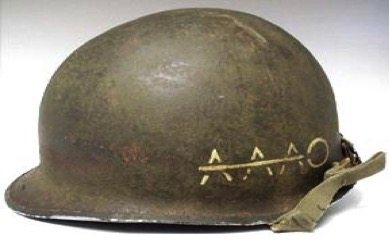
The Soldiers of the 39th Regiment, their lineage dating to the War of 1812, were commanded by an intensely driven officer that General Patton himself said was “Nuts-but fights well.” Colonel Harry A. “Paddy” Flint was likely the oldest line officer in the Army, having been an upper classman to Eisenhower. The 39th landed in Normandy on D plus 4. As they penetrated inland, Paddy commanded by leading from the front, fighting alongside his line platoons. At one point, while assaulting a German pill box, one of his Soldier’s remarked to him “Paddy, everyone knows you can’t kill an Irishman, you’ll just make him mad” to which Paddy turned and smiled.
Paddy commanded seasoned veterans. The 39th had fought in the Italian campaign and faced extremely tough and well resourced German Infantry. This was good preparation for what they experienced in France, being at the epicenter of the vicious fight to retain the Normandy beachhead and defeat German spoiling attacks, which gave the entire American First Army the time and space to gather itself and attack inland. This was block and tackle Infantry combat, much of it done in complex terrain called “hedgerows” which was like fighting in a maze. Imagine only being aware of the immediate 4-12 Soldiers in your Squad and being fed orders through runners and occasional radio traffic, amidst a constant state of disorientation. Whether the enemy was to your front, rear, or all around you, it made no difference.
This was a battle where stamina would persevere over valor. One hour there could be a gunfight where it was rifleman against rifleman. The next hour could mean German armored vehicles plowing through the mazes of brush supported by toughened Infantry. The Hedgerows were a test to see who would be the last man standing in the contest to attack the Third Reich itself.
Paddy Flint was the kind of salty Army officer who instinctually understood this. His unit would have landed on Utah beach and witnessed the carnage left behind from June 6th. The sense of confusion on the part of his Soldiers would have been tremendous. We were on the beaches. What now? Did they feel a sense of foreboding as he glanced at the death ground paid for so dearly with their comrades who assaulted the beach? Paddy would not only have felt the natural feelings of everyone else, but he also felt the burden of command. Perhaps he compartmentalized all his sentiment, and focused on maintaining his gear, his living comrades, and the tasks he had at hand. Ten months of war remained and he had to use the blood and sweat of the men he loved to fight through the myriad of German death traps that waited for them.
Tragically, old Paddy was mortally wounded on July 24th, a 56 year old Regular Army Officer, having lived for the profession of arms his entire life. He died fighting alongside his men. The 39th Regiment, like all Regiments has a soul. Paddy summoned up a lifetime of professional Soldiering and threw his entire essence behind leading this regiment into the greatest war the world has ever known. To this day his surviving Soldiers owe a great deal of their wartime performance to old Paddy’s leadership.
From Algeria, to Italy, to Normandy to the bridgehead at Remagen, this storied Regiment earned valorous citations from both Belgium and France. The 39th, the “Fighting Falcons” took on the block and tackle fight where slow bleeding, the turnover of nameless officers and men, and stories of valor will forever be untold; where reports containing half truths about places the fallen didn’t even know the name of; the mud, the blood and the despair all compose the endless nightmare that stays with every Infantryman through the course of his life.
This was the tale of the 39th Regiment. They paid the butcher’s bill for bits and pieces of turf to defeat the Third Reich and are known only in the annals of our military heritage, and in the eternal Soldier’s hearts of men like Colonel Paddy Flint, United States Army.
In Conclusion
In reading these descriptions of arms and men, we have marched with four of our forbearers. These were men chosen out of American society to save the world from tyranny. Their performance and exploits bring not only honor to those who follow them, but give us a precious gift to enjoy our God given happiness in ways the rest of the world will never know. Most significant is that by knowing and understanding the men who fight for our liberty, we aspire to ennoble ourselves, and inherit a rich legacy of stories to pass to our children, so that they, and their decedents in turn, shall make sure that our nation, the herald of inspirer of a golden age, does not perish from the earth.
From this day to the ending of the world,
But we in it shall be remembered –
We few, we happy few, we band of brothers;
For he to-day that sheds his blood with me
Shall be my brother; be he ne’er so vile
As we walk the Norman sands, gaze on to the veterans who now represent those who perished there, and respect those who stand with other veterans in a sacred gesture of respect for those Soldiers who for that one day, risked all they ever had, and all they would ever have for a cause they believed greater than themselves.
Joseph Labarbera, Lima Charlie News
Joseph Labarbera (USMC, U.S. Army) served as Command Inspector General at Ft. Irwin, California. Joe served 54 months combined OEF/OIF, with 46 months of combat in the Army’s 10th Mountain Division throughout Afghanistan and Iraq.
Lima Charlie provides global news, featuring insight & analysis by military veterans and service members Worldwide.
For up-to-date news, please follow us on twitter at @LimaCharlieNews
In case you missed it:
Listen to Lima Charlie’s podcast:
PTSD, depression, suicide, and the many unorthodox treatments available to those that suffer – Ep.02

![Image The Normandy Quartet: D-Day as it related to four American Fighting Men [Lima Charlie News][U.S. Navy photo]](https://limacharlienews.com/wp-content/uploads/2016/07/The-Normandy-Quartet-D-Day-as-it-related-to-four-American-Fighting-Men.jpg)
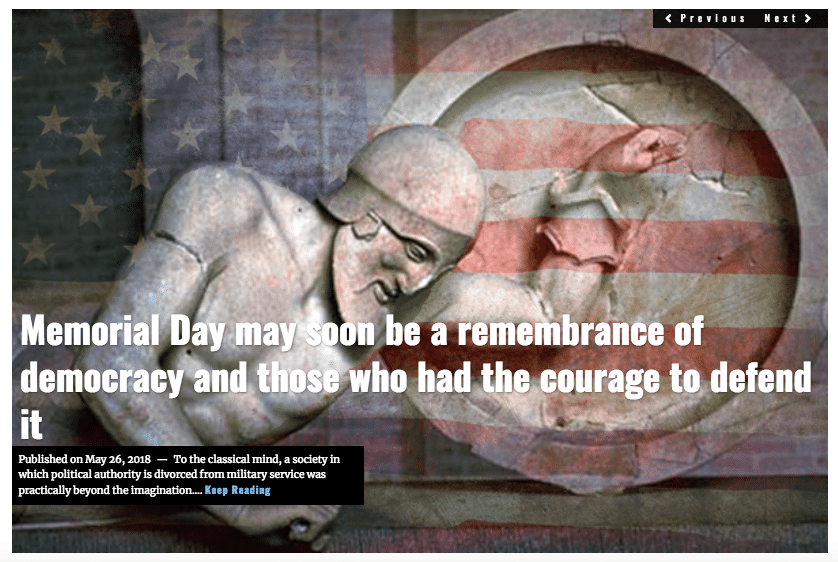
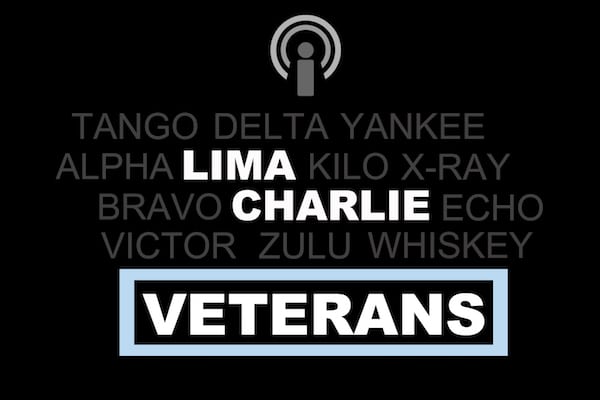

](https://limacharlienews.com/wp-content/uploads/2019/03/Remembering-Becket-A-mothers-search-for-answers-480x384.png)
![Image The Normandy Quartet: D-Day as it related to four American Fighting Men [Lima Charlie News][U.S. Navy photo]](https://limacharlienews.com/wp-content/uploads/2016/07/The-Normandy-Quartet-D-Day-as-it-related-to-four-American-Fighting-Men-480x384.jpg)


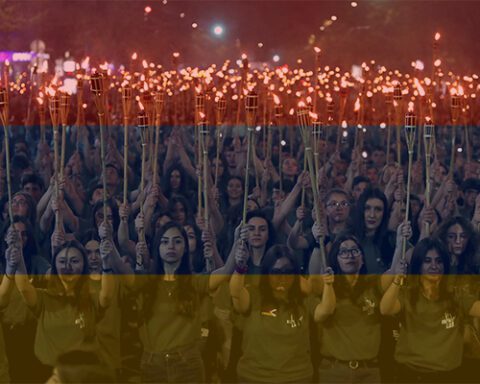


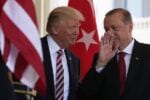
](https://limacharlienews.com/wp-content/uploads/2019/03/Remembering-Becket-A-mothers-search-for-answers-150x100.png)